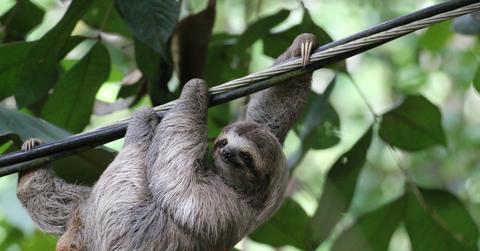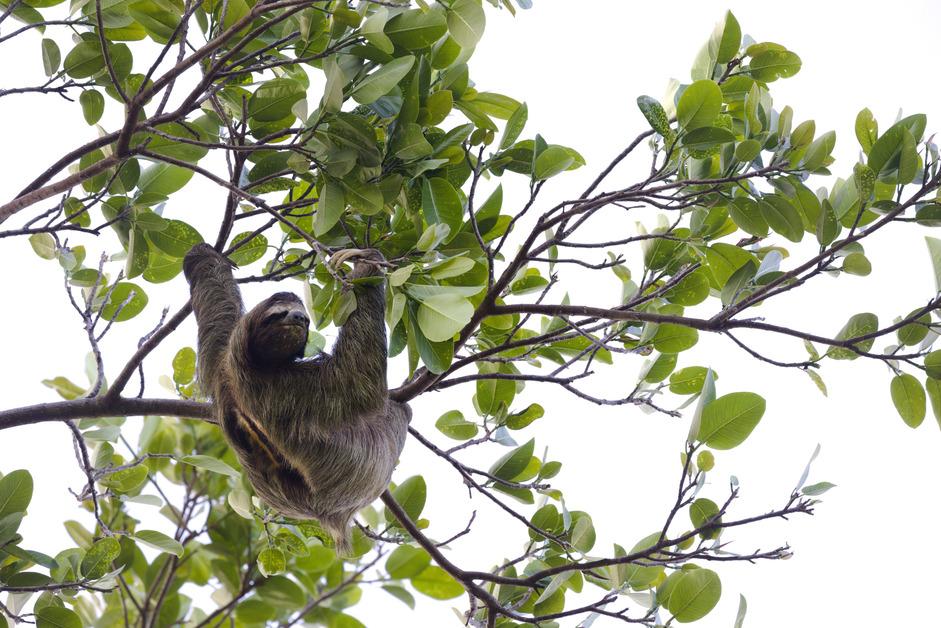Saving the Sloths: Which Species Are Endangered and Why
Published Nov. 7 2023, 5:00 p.m. ET

The Gist:
Of the six sloth species, the pygmy sloth is the only one listed as critically endangered.
The pygmy sloth lives off the coast of Panama and is threatened by climate change and habitat loss.
Although only one species is listed as endangered, all sloth species are experiencing a population decline largely due to deforestation, human development, and climate change.
Sloths, known for their long limbs, sleepy demeanor, and sluggish movements, are an integral part of rainforest ecosystems. Living in Central and South America, sloths spend their days sleeping and slowly swinging from branch to branch to eat leaves and twigs.
However, deforestation, human development, and climate change are putting populations at risk, and among the six species of sloth, some are faring better than others. This poses the question, are sloths endangered?

Are sloths endangered?
Some, but not all, sloths are endangered. There are actually two types of sloths, two-toed and three-toed, and six species, which include the pygmy three-toed sloth, maned sloth, pale-throated sloth, brown-throated sloth, Linnaeus’s two-toed sloth, and Hoffman’s two-toed sloth, per the World Wildlife Fund.
The International Union for Conservation of Nature’s (IUCN) Red List categorizes the pygmy sloth as critically endangered, the maned three-toed sloth as vulnerable, and the four other species as least concern, per the International Fund for Animal Welfare (IFAW).

Why are some sloth species endangered?
According to The Sloth Conservation Foundation, the pygmy sloth's restricted habitat has made them not only the most endangered among all sloth species but also one of the most endangered mammal species on the planet.
Pygmy sloths are only found on an uninhabited island off the coast of Panama, which is so small that its total area is just under two miles, per IFAW. It’s estimated there are anywhere from 500 to 2000 pygmy sloths living at any given time. Because of its restricted habitat, the pygmy population is incredibly vulnerable to habitat loss from rising sea levels and climate change, per The Sloth Conservation Foundation.
The maned three-toed sloth, which is considered vulnerable by the IUCN, lives only in the Atlantic coastal rainforest of southeastern Brazil and is under threat due to deforestation from logging, plantation and pasture clearing, and charcoal production. The maned three-toed sloth’s habitat has been reduced by approximately 90 percent, per One Earth.
Sloth populations are hard to track.
Unfortunately, sloth population data, even for the species categorized as least concern, is largely unknown, as per The Sloth Conservation Foundation,. Their risk of extinction has been based on their population dispersion for the most part, which doesn’t account for the actual population size or trend.
Most sloth species have a wide distribution but a decreasing population trend, meaning that there is a chance sloth populations could reach a critical and irrecoverable point without us knowing.

What’s being done?
The Sloth Conservation Foundation stresses that major work needs to be done to find ways to accurately track sloth populations, however, there are other smaller conservation efforts in place to protect existing sloths.
The Sloth Conservation Foundation’s Sloth Crossings Project works to develop natural canopies and artificial bridges to protect sloths from electrocution by power lines. The Connected Gardens Project also maintains canopy connections throughout rainforests to prevent habitat fragmentation. These two smaller-scale conservation efforts help facilitate human and sloth co-existence.